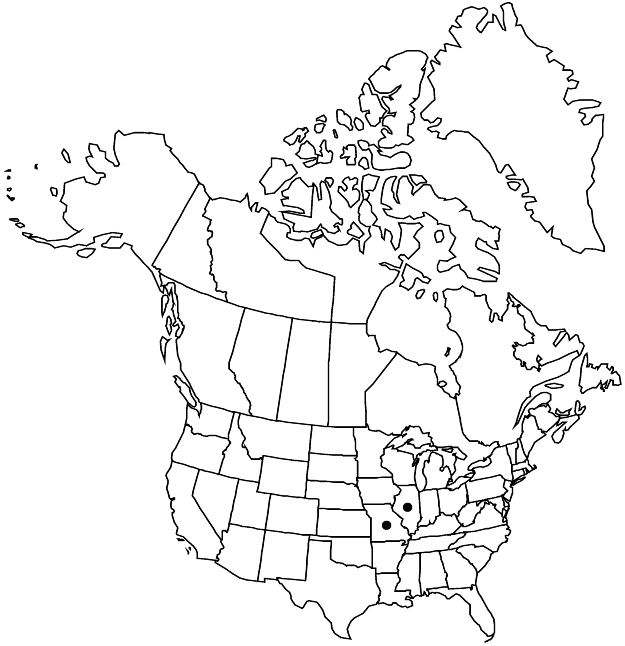Crataegus spes-aestatum
Novon 16: 382, fig. 1. 2006.
Shrubs or trees, 30–60 dm. Stems: twigs: new growth canescent, 1-year old reddish brown, older ± pale gray; thorns on twigs absent or few, straight or slightly curved, 1-year old silver-black, slender, 2.5–6 cm. Leaves: petiole 0.7–1.5 cm, length 18–25% blade, densely pubescent young, glabrescent, sparsely sessile-glandular; blade rhombic-elliptic, 4–6 cm (3–4 cm at anthesis), 1.5–2 times as long as wide, base cuneate, lobes 3 or 4 per side, lobe apex acute, margins serrate, teeth gland-tipped, veins 4 or 5 per side, apex acuminate, abaxial surface sparsely pubescent, densely pubescent on veins young, adaxial scabrous-pubescent young. Inflorescences 6–12-flowered; branches densely canescent; bracteoles membranous or ± herbaceous, margins glandular. Flowers 20–22 mm diam.; hypanthium canescent; sepal margins glandular-serrate, abaxially sparsely pubescent; stamens 20, anthers yellow or cream; styles 5. Pomes red, suborbicular, 10 mm diam. (dry), glabrous, short-pubescent at base and apex; sepals ± eroded (in specimen seen); pyrenes 3–5.
Phenology: Flowering Apr; fruiting Sep–Oct.
Habitat: Thickets, hills, dry open woods, alluvial streambanks
Elevation: 100–200 m
Discussion
Of conservation concern.
Crataegus spes-aestatum is known only from southern Illinois and counties bordering the Mississippi River in southern Missouri. It is similar to C. collina and has not been seen with certainty since the 1930s.
Selected References
None.
